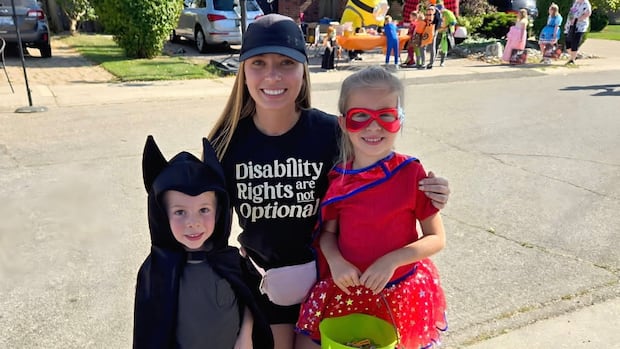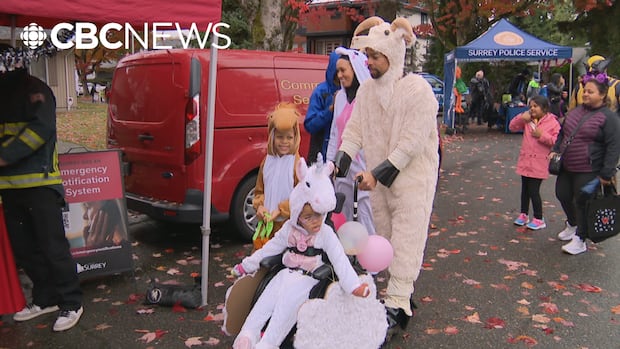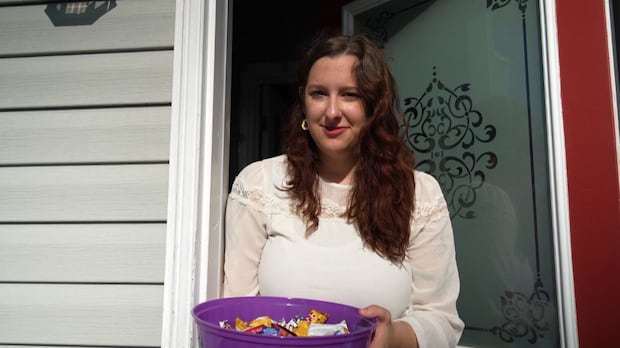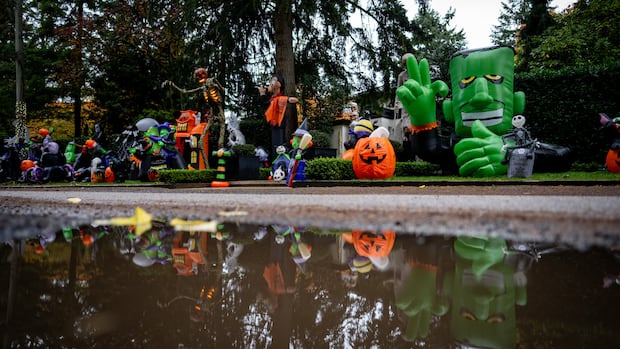This Halloween, a Hamilton family will join others in serving trick-or-treaters from the curb in an effort to make the experience more accessible.
It’s part of a growing movement called Treat Accessibly.
Mercedes Palermo, who lives in Hamilton’s Central Mountain area, says she’s a “huge advocate” for the movement, which promotes ways to make Halloween accessible for those with disabilities, or who are neurodivergent.
It’s personal for Palermo, whose six-year-old daughter Camila is autistic. Not all autistic children have difficulties with Halloween, Palermo notes, but Camila gets easily overwhelmed by new things and some sensory challenges prevent her from enjoying candy.
Participants give treats outdoors on ground level
Treat Accessibly promotes accessibility tips, including providing barrier-free access by offering treats from a driveway, garage or trunk of your vehicle to prevent people from having to climb stairs. Other recommendations include offering a non-edible treat option for people who can’t have candy, and avoiding the use of bright lights and sudden sounds.
These types of barriers make “something that should be so fun for everybody so difficult,” Palermo said.
Palermo, who works as a registered nurse, also manages a social media page called Autism Out Loud, where she shares tips and experiences about raising a neurodivergent child.
She recommends that people “let go of any expectations that homeowners have for trick-or-treaters,” such as making sure they say “Trick or treat” or are wearing costumes.
“Let people enjoy the night.”
Families gathered on Saturday in Surrey’s Newton neighbourhood for Treat Accessibly, a barrier-free trick-or-treating village open to kids of all abilities. Parents and homeowners who participate say being able to partake in the Halloween tradition makes a world of difference to kids.
To advertise that their family will be offering an accessible trick-or-treating experience, the Palermos put up a Treat Accessibly sign on their lawn at the start of the month.
The signs come from the Treat Accessibly organization, which got its start in nearby Oakville, Ont., in 2017. It was then that founder Rich Padulo and his daughter Siena were decorating their home for Halloween. Siena saw a boy in a wheelchair across the street and asked how he could go trick-or-treating at their house if he couldn’t climb stairs to get to their door.
“That night, we made a plan,” Padulo told CBC Hamilton. They made a sign announcing their home would be accessible to trick-or-treaters, and on Halloween the following week, gave out candy from the base of their driveway.
The sign got a lot of attention in the family’s neighbourhood, with people asking for their own signs. The Padulos also met the family of one trick-or-treater with a disability who drove four kilometres specifically because they saw the sign. That memory is “still right here in my heart,” Padulo said.
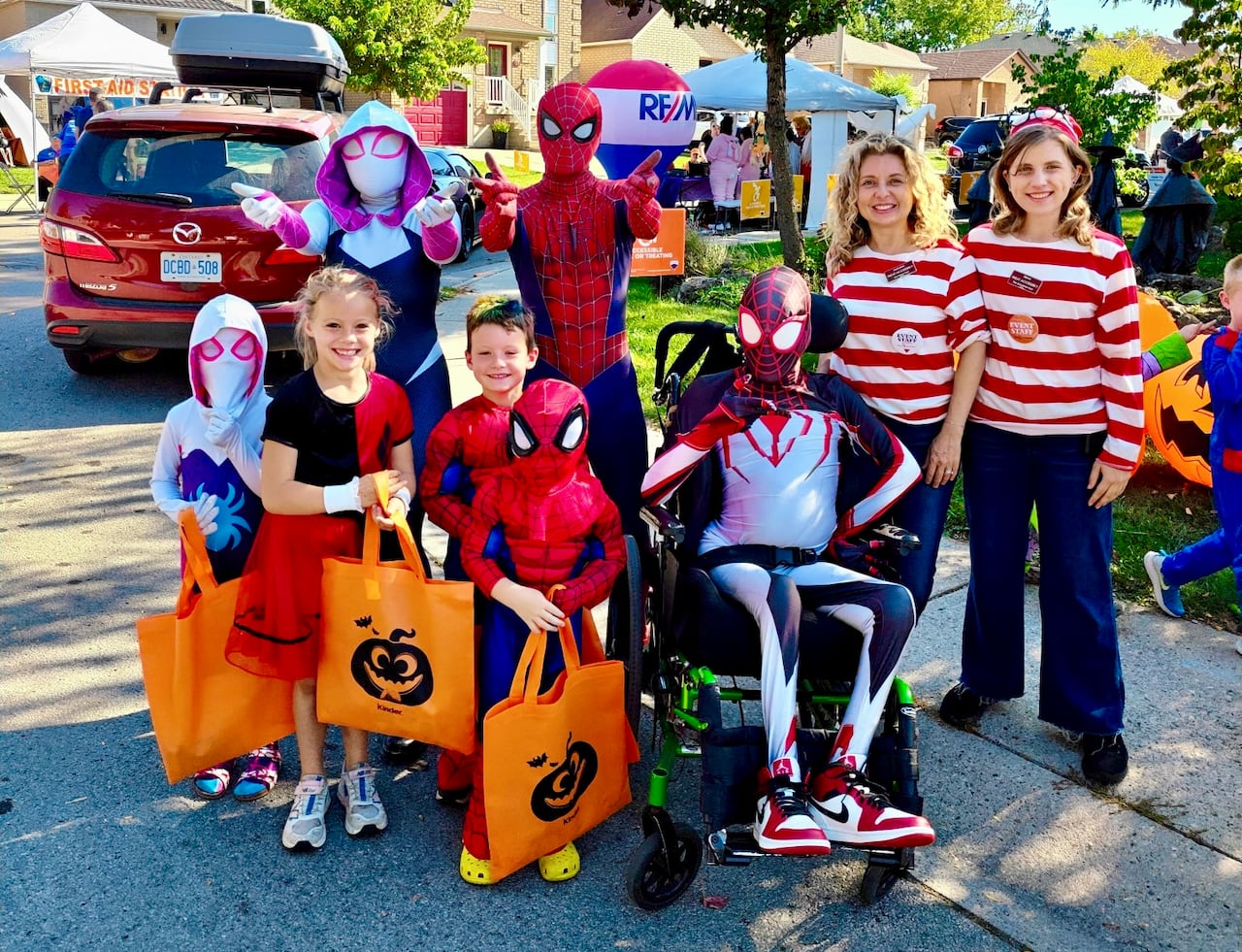
Now, the family-led organization is on track to reach 300,000 signs distributed by the end of this Halloween, Padulo said.
Treat Accessibly recently got a shout-out in the House of Commons from Carleton MP Bruce Fanjoy, who said, “Treat Accessibly is a reminder that inclusion is not a barrier but an opportunity.”
The organization works with businesses that fund programming through their marketing budgets. For example, 700 Pet Valu stores distribute its signs, and this year, Treat Accessibly has a partnership with candy-maker Kinder.
Stocking up for Halloween can be a costly measure, and Statistics Canada says the cost of sugary items like chocolate bars in Newfoundland and Labrador are up as much as 10 per cent. But what drives candy prices to rise like a zombie? The CBC’s Maddie Ryan finds out.
In 2021, the organization hosted its first “village,” in Toronto, an accessible trick-or-treating block party. The next year, Treat Accessibly hosted villages in nine cities, including Hamilton.
That trend has continued, with Padulo, Siena and his wife Natasha travelling to various communities to attend. Padulo always shows up dressed as Bruce Wayne, the billionaire philanthropist who secretly fights crime as Batman.
“We have tons of candy and non-edible treats, and mayors often show up. So, who else could do that but Bruce Wayne?” Padulo said.
This year’s village locations included Surrey, B.C., St. Albert, Alta., Edmonton, Calgary, Ottawa, Toronto, Montreal and Halifax.
Hamilton’s Halloween village took place on Cartier Crescent on the afternoon of Oct. 5 this year. Palermo says the villages are “remarkable” and many people on the street participated. “It’s really touching when you see it.”
It’s also Halloween fun her daughter can more reliably enjoy because it takes place during the day, and is more predictable for her than trick-or-treating Halloween night, Palermo said.
As the movement has become more known in their neighbourhood, Palermo said, she’s seen other neighbours practising Treat Accessibly’s tips.
“To be able to enjoy holidays and things like Halloween without feeling judgment and without feeling pressure as a child, it really does mean everything.”


